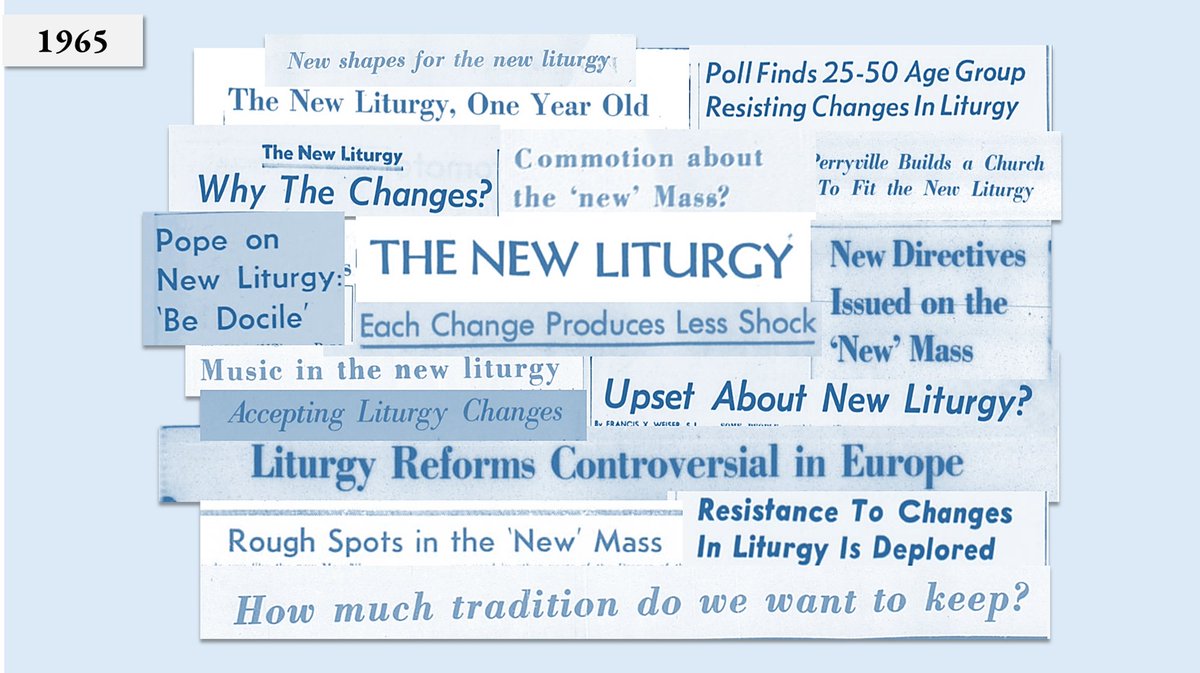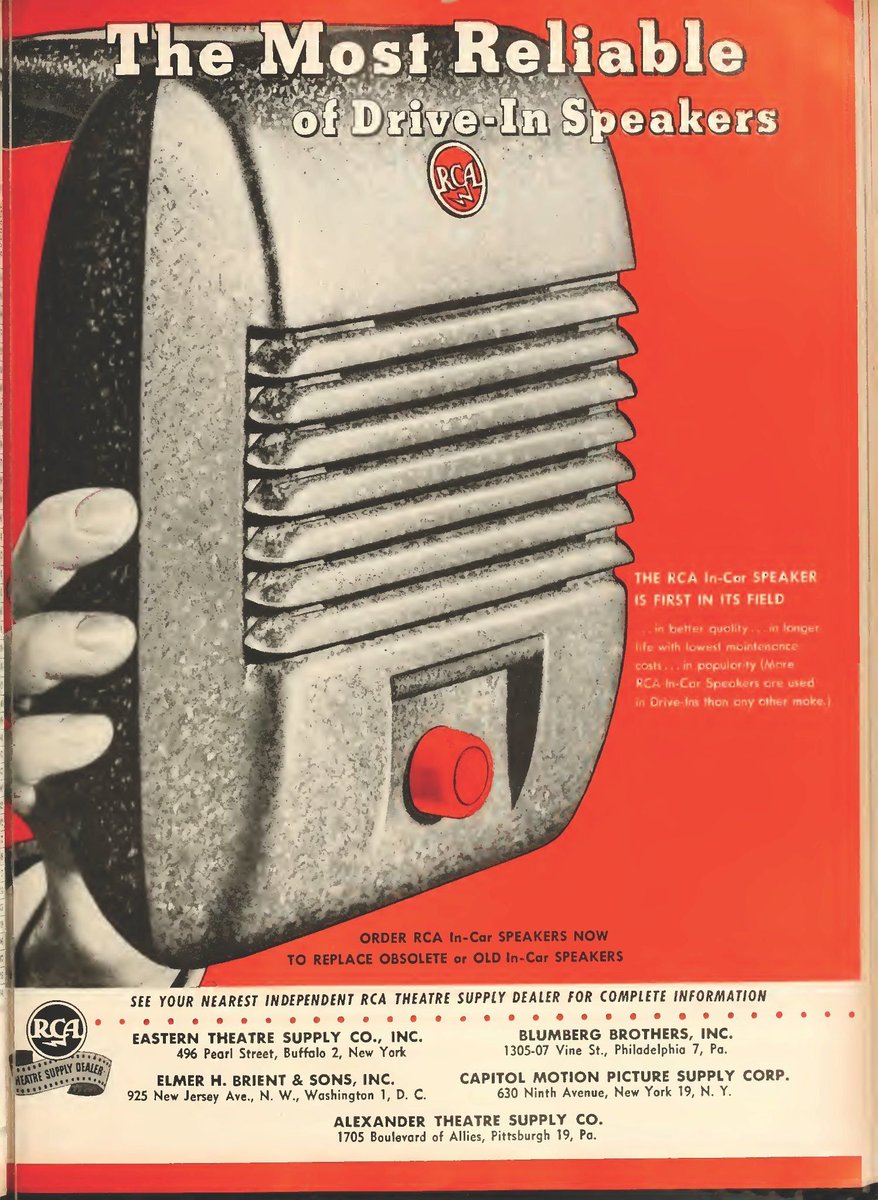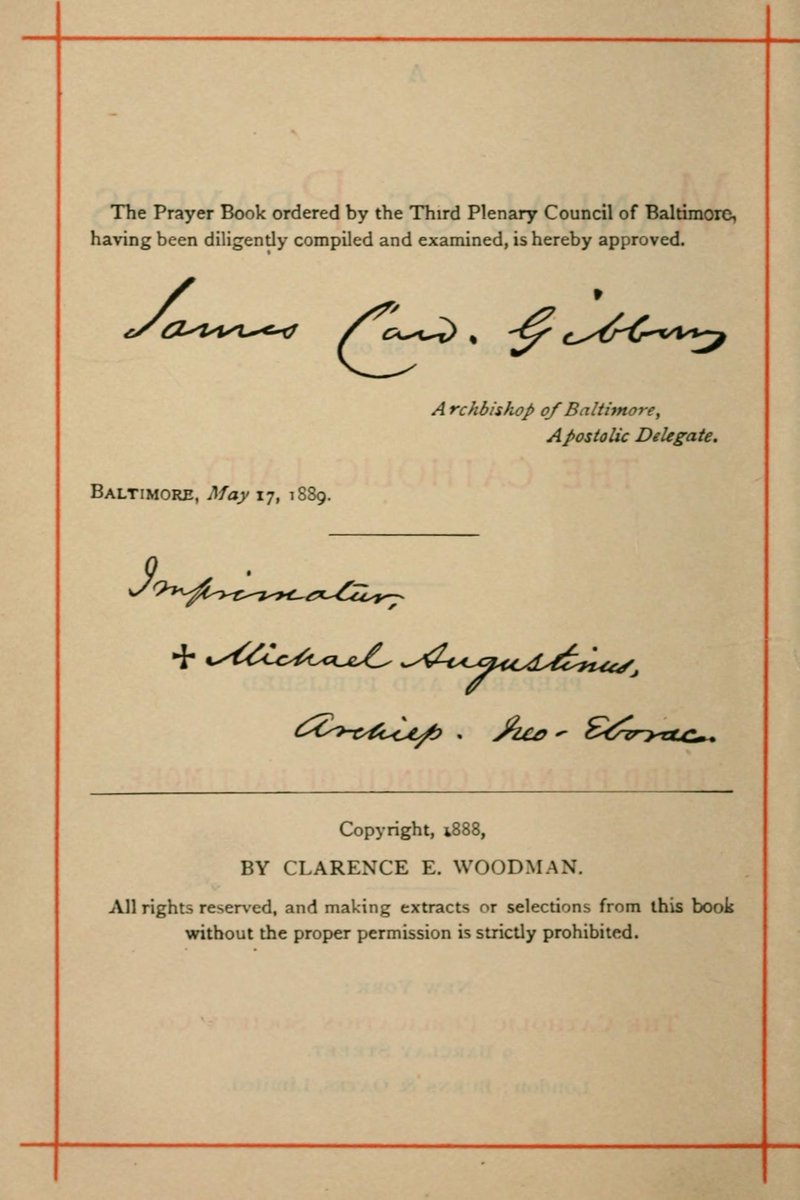Today we have the first part of “The ‘New Mass’ of 1964”
Part 1 is titled “A New Liturgy: How the ‘reform before the reform’ was understood”
How were the very first liturgical reforms beginning in 1964 explained to & understood by the laity and the wider church?
🧵⤵️
Part 1 is titled “A New Liturgy: How the ‘reform before the reform’ was understood”
How were the very first liturgical reforms beginning in 1964 explained to & understood by the laity and the wider church?
🧵⤵️

Here’s a link to the article:
🔗
Check it out and let me know your thoughts!handmissalhistory.com/newmass1964par…
🔗
Check it out and let me know your thoughts!handmissalhistory.com/newmass1964par…
To study these questions, I examined the US Bishops’ official news service & other diocesan newspapers
This offers a unique window into what life would have been like for Catholic during these years
What were they reading, hearing, saying, and being taught about the changes?
This offers a unique window into what life would have been like for Catholic during these years
What were they reading, hearing, saying, and being taught about the changes?

This newspaper analysis makes it abundantly clear that the vast majority of Catholics viewed the initial liturgical changes as a dramatic break from the past.
Newspapers in 1964, 1965, and 1966 were dominated by discussion of “the New Liturgy” and “the New Mass.”
Newspapers in 1964, 1965, and 1966 were dominated by discussion of “the New Liturgy” and “the New Mass.”

The terms “the New Mass” and “the New Liturgy” were used by all of the most ‘official’ and authoritative Catholic sources to describe the changes beginning in 1964.
Many priests, officials, and bishops all used this terminology... even the pope did so, publicly, several times!
Many priests, officials, and bishops all used this terminology... even the pope did so, publicly, several times!

These terms were widely and equally used both by those who liked and those who disliked the changes
Here's one letter to the editor from Sept 1966
from someone who liked the changes and was imploring Catholics to come together and support the new liturgy:
Here's one letter to the editor from Sept 1966
from someone who liked the changes and was imploring Catholics to come together and support the new liturgy:

Even as additional "interim" changes were made, the original 1964 changes would continue to be referenced as the start of the New Liturgy
Eg, this article from Nov '65 celebrates one year of the new liturgy without reference to the much larger changes which had occurred in March
Eg, this article from Nov '65 celebrates one year of the new liturgy without reference to the much larger changes which had occurred in March

I also searched for something which could give a more objective and ‘big picture’ understanding of how Catholics viewed the initial liturgical changes vs those of 1970
So I took 16 diocesan and national Catholic newspapers which had been digitized & processed with OCR software![The 16 newspapers used for the N-Gram word frequency tracker analysis by Nico Fassino. Newspapers marked with an asterisk were also used by additional, smaller dioceses [indicated in brackets] as their diocesan newspaper because, for whatever reason (size, expense, etc), the smaller diocese did not have a diocesan newspaper of its own. All diocesan population figures come from the 1965 Kenedy Directory.](/images/1px.png)
So I took 16 diocesan and national Catholic newspapers which had been digitized & processed with OCR software
![The 16 newspapers used for the N-Gram word frequency tracker analysis by Nico Fassino. Newspapers marked with an asterisk were also used by additional, smaller dioceses [indicated in brackets] as their diocesan newspaper because, for whatever reason (size, expense, etc), the smaller diocese did not have a diocesan newspaper of its own. All diocesan population figures come from the 1965 Kenedy Directory.](https://pbs.twimg.com/media/G048a-WXoAA-DoY.jpg)
... and I produced an “N-Gram”-style word frequency tracker
to compare the number of times that the phrases “the New Liturgy” and “the New Mass” were used for describing the liturgy between 1961 and 1970
The data are summarized and plotted in the chart below
to compare the number of times that the phrases “the New Liturgy” and “the New Mass” were used for describing the liturgy between 1961 and 1970
The data are summarized and plotted in the chart below

To view the chart in a slightly different and interactive form, click here to see it via DataWrapper:
🔗 datawrapper.de/_/ZyoEs/
🔗 datawrapper.de/_/ZyoEs/
Also, for a detailed explanation of my sources, selection criteria, analysis methodology, results, & other information about this newspaper analysis, see my Methodology Appendix:
🔗
(this in itself is 6,000+ words w/ nearly 30 footnotes🫠🥴)bit.ly/NewMass1964met…
🔗
(this in itself is 6,000+ words w/ nearly 30 footnotes🫠🥴)bit.ly/NewMass1964met…
The “N-Gram” word search also suggests another avenue of inquiry for understanding how these initial liturgical changes were understood and received.
The data show that the terms “the New Liturgy” and “the New Mass” were used more in 1965 and 1966 than they were in 1969 and 1970
The data show that the terms “the New Liturgy” and “the New Mass” were used more in 1965 and 1966 than they were in 1969 and 1970

But why would this be?
Was not the revised missal Paul VI a far more dramatic liturgical change than the modifications which had occurred between 1964 and 1968?
Was it not the long-planned culmination and fulfillment of the liturgical reform initiated?
Was not the revised missal Paul VI a far more dramatic liturgical change than the modifications which had occurred between 1964 and 1968?
Was it not the long-planned culmination and fulfillment of the liturgical reform initiated?
https://x.com/HandMissals/status/1961450616057651249
To help put the N-Gram results into context, I decided to examine the following:
how American diocesan newspapers announced and described the 1964 liturgical changes
vs
how those *same* diocesan newspapers announced and described the revised Missale Romanum six years later
how American diocesan newspapers announced and described the 1964 liturgical changes
vs
how those *same* diocesan newspapers announced and described the revised Missale Romanum six years later

Even the mere attempt to find the correct editions of the newspapers was a challenge and itself illuminating.
Unlike most of the 1964 and 1965 changes
... there was not one uniform standard date upon which the dioceses of the United States adopted the revised missal of Paul VI
Unlike most of the 1964 and 1965 changes
... there was not one uniform standard date upon which the dioceses of the United States adopted the revised missal of Paul VI
Pope Paul VI promulgated the new order of the Mass on May 2, 1969, stating that it would go into effect throughout the world on November 30.
As the year progressed, however, various bishops’ conferences around the world indicated that they would not or could not do so.
As the year progressed, however, various bishops’ conferences around the world indicated that they would not or could not do so.
The US bishops had moved swiftly to implement the 1964 changes, but they showed very little urgency for implementing the new Order of the Mass
On Aug 22 1969, they announced that they would wait until Nov before picking a date when the New Mass would be implemented in America!
On Aug 22 1969, they announced that they would wait until Nov before picking a date when the New Mass would be implemented in America!

This difference in attitude towards the 1970 liturgy can also be seen in the newspaper coverage
There was stark and surprising difference in how the same American diocesan newspapers announced and covered the 1964 liturgical change versus that of 1970:
There was stark and surprising difference in how the same American diocesan newspapers announced and covered the 1964 liturgical change versus that of 1970:
In 1964, every diocesan newspaper I studied announced or discussed the impending liturgical changes in the diocese either the week before or the week of the deadline ... and w/ front page coverage.
In 1970, five of these same papers did not mention the changes at all!
In 1970, five of these same papers did not mention the changes at all!

To view the chart in a slightly different and interactive form, click here to see it via DataWrapper:
🔗 datawrapper.de/_/hjD7O/
🔗 datawrapper.de/_/hjD7O/
The differences in 1964 vs 1970 coverage are further illuminated when compared with
how these same diocesan newspapers covered the the new English translation of the Roman Missal in 2011 (a much more minor liturgical change than that of 1970)
🔗 datawrapper.de/_/hjD7O/
how these same diocesan newspapers covered the the new English translation of the Roman Missal in 2011 (a much more minor liturgical change than that of 1970)
🔗 datawrapper.de/_/hjD7O/

What explains this difference in news coverage between 1964 vs 1970?
This newspaper analysis suggests that the 1970 changes were considered by many to be just one more installment in a series of changes
rather than the culmination & grand finale of the liturgical reform
This newspaper analysis suggests that the 1970 changes were considered by many to be just one more installment in a series of changes
rather than the culmination & grand finale of the liturgical reform
Several newspapers even made statements to this effect
The Diocese of Pittsburgh’s newspaper mentioned the 1970 changes in a notice on the bottom of page 2.
It read, in part: “Most of the changes involve the priest. The average worshiper isn’t apt to notice much difference.”
The Diocese of Pittsburgh’s newspaper mentioned the 1970 changes in a notice on the bottom of page 2.
It read, in part: “Most of the changes involve the priest. The average worshiper isn’t apt to notice much difference.”

Atlanta is perhaps the most extreme example of the 5 dioceses in this analysis which did not announce or discuss the 1970 changes
Across all editions of the paper between January and March, there is no mention–at all–of the implementation of the new Roman Missal in the diocese
Across all editions of the paper between January and March, there is no mention–at all–of the implementation of the new Roman Missal in the diocese

This has been my longest thread to date, so it is time to start wrapping it up
To conclude:
In aggregate, these sources suggest that for the overwhelming majority of English-speaking Catholics who lived through these changes, the “New Mass” arrived in 1964 rather than 1970
To conclude:
In aggregate, these sources suggest that for the overwhelming majority of English-speaking Catholics who lived through these changes, the “New Mass” arrived in 1964 rather than 1970
It also seems that the initial liturgical changes --particularly those in '64 and '64 -- were widely viewed as the primary and fundamental change
and that the revised missal of 1970 was considered, at least in a number of places, to be something closer to a minor modification
and that the revised missal of 1970 was considered, at least in a number of places, to be something closer to a minor modification
But why?
If these were only interim, minor changes... why did the Catholics who lived through those years not receive them in this way?
Why did so many (including priests & bishops) fail to understand that a total revision of the entire Mass was about to be published?
If these were only interim, minor changes... why did the Catholics who lived through those years not receive them in this way?
Why did so many (including priests & bishops) fail to understand that a total revision of the entire Mass was about to be published?

It may be, at least in part, that many Catholics believed that the “New Mass” had already arrived by late 1965...
... because this is what the Vatican itself appeared to tell the world at the time
... because this is what the Vatican itself appeared to tell the world at the time
In January 1966, the Consilium (the official body established by Pope Paul VI to revise the liturgy) issued two important comments/clarifications in its journal Notitiae
Both comments were related to hand missals for the laity and general uncertainties about liturgical reform
Both comments were related to hand missals for the laity and general uncertainties about liturgical reform
In response to concerns that hand missals would soon be invalidated by rumored new liturgical changes in the near future
the Consilium said rumors about “a definitive renewal of the entire Missal” or an “impending reformation of the Order of the Mass” were “without foundation”
the Consilium said rumors about “a definitive renewal of the entire Missal” or an “impending reformation of the Order of the Mass” were “without foundation”

Perhaps this is one of several reasons why so many Catholics who lived through those years thought that “the New Liturgy” had obviously already arrived, and that there was no other revised Missal or new Order of the Mass in the works (at least not for many years to come)
Ok, that’s a wrap for Part 1!
Thanks to everyone who slogged through this thread (longer than I had anticipated!)
Here’s a link to the article:
🔗
Check it out and let me know your thoughts!handmissalhistory.com/newmass1964par…
Thanks to everyone who slogged through this thread (longer than I had anticipated!)
Here’s a link to the article:
🔗
Check it out and let me know your thoughts!handmissalhistory.com/newmass1964par…
@threadreaderapp please unroll
• • •
Missing some Tweet in this thread? You can try to
force a refresh
























